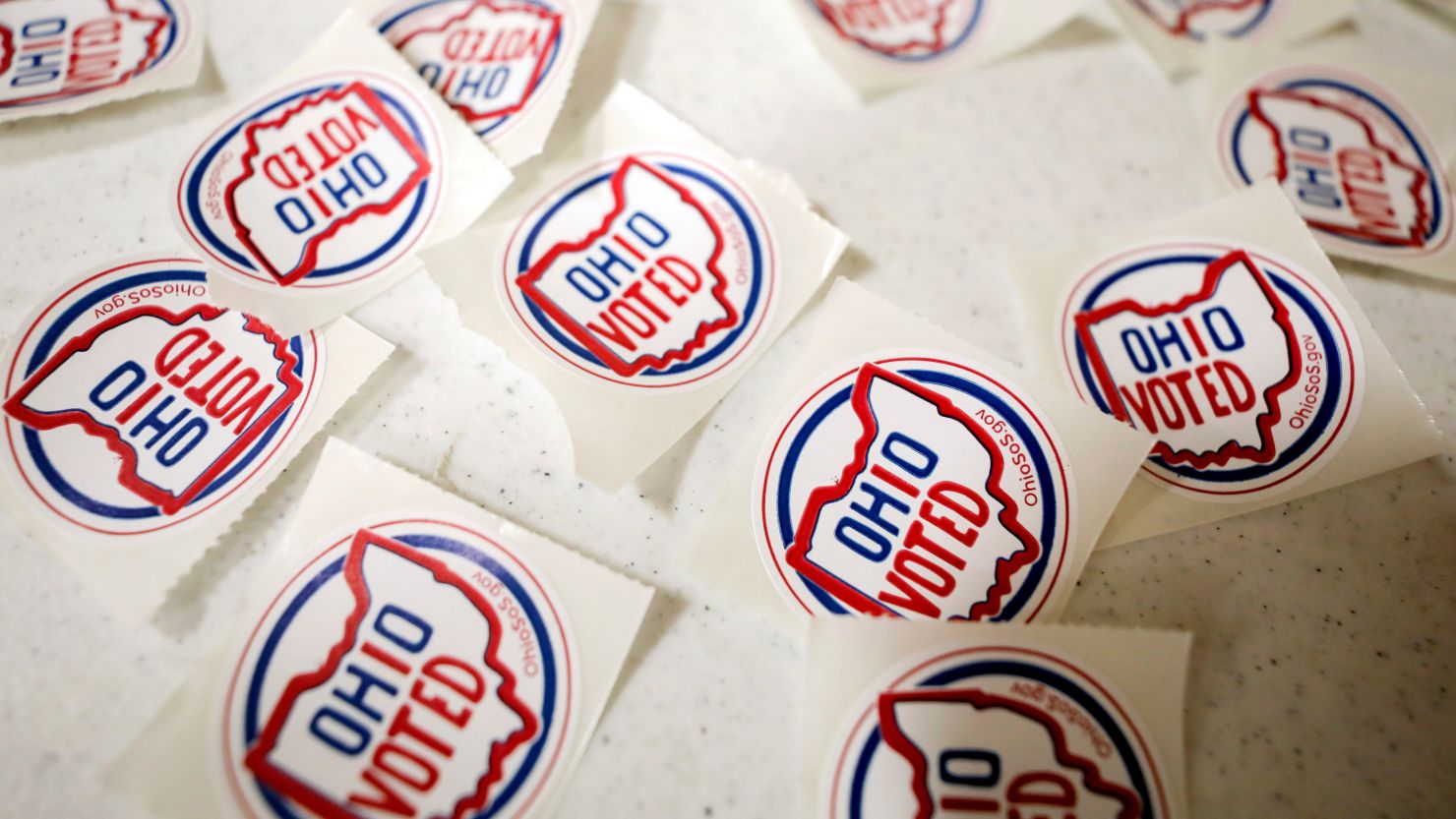Ohio voters rejected Tuesday an effort to raise the threshold to amend the state’s constitution ahead of a November referendum on whether to constitutionally guarantee abortion rights there, handing abortion rights advocates a critical victory.
Known as Issue 1, the measure would have changed Ohio’s referendum law – lifting the threshold to amend the state’s constitution from a simple majority to 60% of the vote.
Its passage would have effectively raised new obstacles to direct democracy, making it harder for citizens to bypass the Ohio legislature with referendums.
The measure was a GOP-led effort targeting an upcoming November referendum in which voters will decide whether to enshrine abortion rights in the state’s constitution.
A broad coalition that rallied Ohioans to “Vote No” on Issue 1 declared victory on Tuesday night in downtown Columbus and vowed to mount an aggressive campaign to protect abortion rights on the November ballot.
“Ohio, we did it. Tonight is a major victory for democracy in Ohio,” said Dennis Willard, a spokesman for the coalition One Person, One Vote. “The majority still rules for democracy in Ohio. The people’s power has been preserved.”
Effectively, Tuesday was the first of a two-step process, determining whether November’s referendum would be able to pass with a simple majority – 50% plus one vote – or need to meet the higher threshold of 60% plus one vote.
If the abortion measure is approved by voters in that November election, the amendment would trump Ohio’s 2019 law that bans abortion after six weeks of pregnancy without exceptions for rape or incest. It is currently the subject of a court battle.
Dr. Marcela Azevedo, the leader of Ohioans United for Reproductive Rights, thanked voters for rejecting Issue 1.
“Together, we’ve delivered this unbelievable and amazing, but absolutely true result of what Ohioans really want,” Azevedo said. “The energy and enthusiasm we witnessed in the last few weeks has been both overwhelming and inspiring.”
The sprint to November’s referendum has made Ohio the next major battleground in the fight over abortion rights after the Supreme Court’s reversal of Roe v. Wade last year.
Already, voters in two deep-red states, Kansas and Kentucky, have rejected efforts to limit abortion rights (though abortion is still banned in Kentucky). The Democratic push to enshrine abortion rights in Michigan’s constitution played a key role in the party’s victories there in the 2022 midterm elections.
President Joe Biden and his reelection campaign heralded the election results Tuesday night.
The president criticized what he called Ohio Republican lawmakers’ “blatant attempt to weaken voters’ voices and further erode the freedom of women to make their own health care decisions.” He added in his statement, “Ohioans spoke loud and clear, and tonight democracy won.”
The leaders of the coalition in Ohio made clear that Tuesday’s victory was the beginning – not the end – of the campaign to enshrine abortion rights in the state constitution. They said the work on that effort begins Wednesday.
Tuesday’s referendum was broadly opposed by Democrats and progressive groups. Republicans and conservative interests were split on the measure. GOP Gov. Mike DeWine supported Issue 1, as did the Ohio Chamber of Commerce, Ohio Right to Life, the Buckeye Firearms Association and more.
“The concern is that people can come in, outside forces, outside the state of Ohio and spend a ton of money to try to impact that. The better process is frankly, through the legislative process,” DeWine told Ohio reporters in May.
But two GOP former governors, John Kasich and Bob Taft, opposed it. Kasich, who suffered a political setback when voters overturned a controversial anti-union law in 2011, said on Twitter in April that seeking to limit voters’ say on public policy measures is wrong.
“I’ve experienced that firsthand, having policies backed by myself and a majority of the legislature’s members overturned at the ballot box, and it never occurred to me to try to limit Ohioans’ right to do that,” he said. “It wouldn’t have been right then, and it isn’t right now.”
Outside groups poured more than $26 million into advertising on both sides. Protect Our Constitution, a group focused on passing Issue 1, had spent almost $2.7 million on advertising, according to AdImpact data. Protect Women Ohio, a group focused on fighting new protections for abortion in November, had spent $7 million ahead of the Tuesday vote.
Even ahead of Tuesday’s vote, there were indications of strong voter interest in the measure. About 696,000 Ohioans had voted before Election Day, either early or by mail – a number that exceeded the 638,000-voter turnout in the August 2022 primary and special election.
The November referendum will also set the stage for a crucial 2024 election: Ohio’s Senate race. The incumbent, Democratic Sen. Sherrod Brown, is among the GOP’s top targets as the party seeks to retake the Senate majority.
Among his Republican challengers is Ohio Secretary of State Frank LaRose, the state’s elections chief and the highest-profile proponent of Issue 1. In a video posted Tuesday on Twitter, LaRose touted holding 76 events in favor of the measure.
This story has been updated with additional reporting.
CNN’s Betsy Klein and Arlette Saenz contributed to this report.




